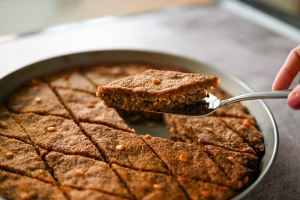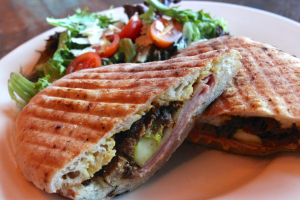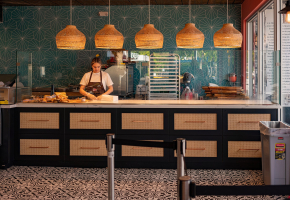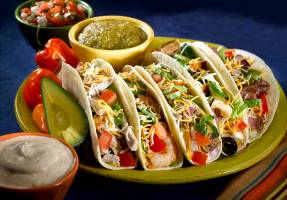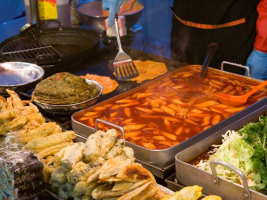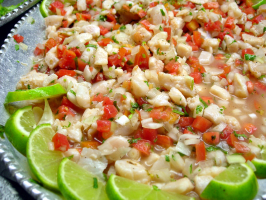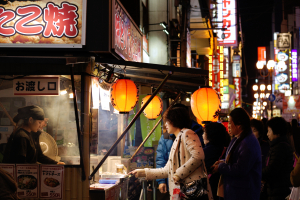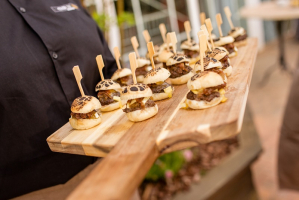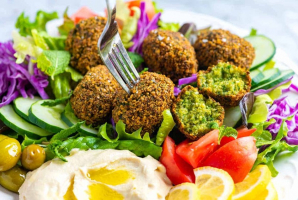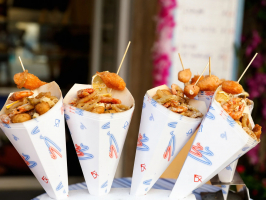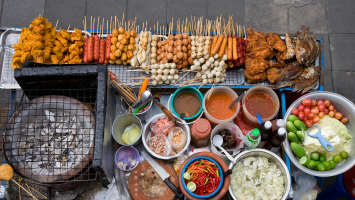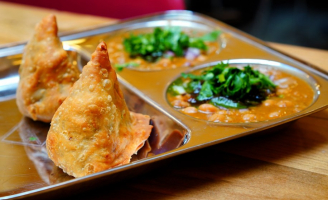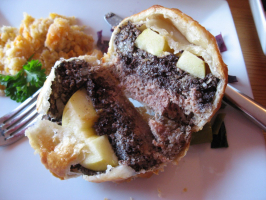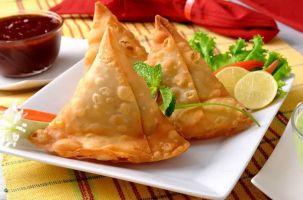Top 10 Best Traditional Food in Cambodia
Cambodian cuisine is a must-try if you ever travel to Asia. Some dishes arrived in this country decades ago, yet their tasty flavors still garner lots of love ... read more...from both locals and tourists until today. This Toplist article will introduce to you some of the best traditional foods in Cambodia!
-
Fish Amok is Cambodia's most well-known traditional cuisine. It is usually regarded as the country's hallmark dish. Its creamy and rich fish stew also gains immense popularity in Thailand and Laos.
Cambodian Fish Amok is prepared using freshwater fish, lemongrass, chili, turmeric, and coconut milk. The meal should be boiled and served in a banana leaf bowl, and you might want to add some grains and even a fried egg for special cases. Traditionally, Amok was cooked with fish or snails. However, beef, chicken, or vegetarian (with tofu) variations are also possible.
Amok is not intended to be hot; rather, it is supposed to be zesty and savory. The conventional usage of white freshwater fish reflects Cambodia's long heritage of incorporating water, rice, and fish into a variety of meals. The fish becomes so soft and delectable that it literally slips off your fork or your chopsticks. Cambodian people like to enjoy it on chilly evenings!
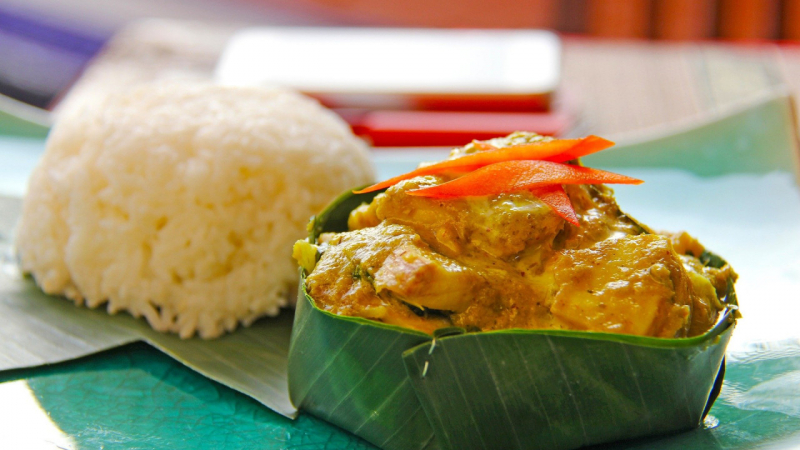
Source: The International Kitchen 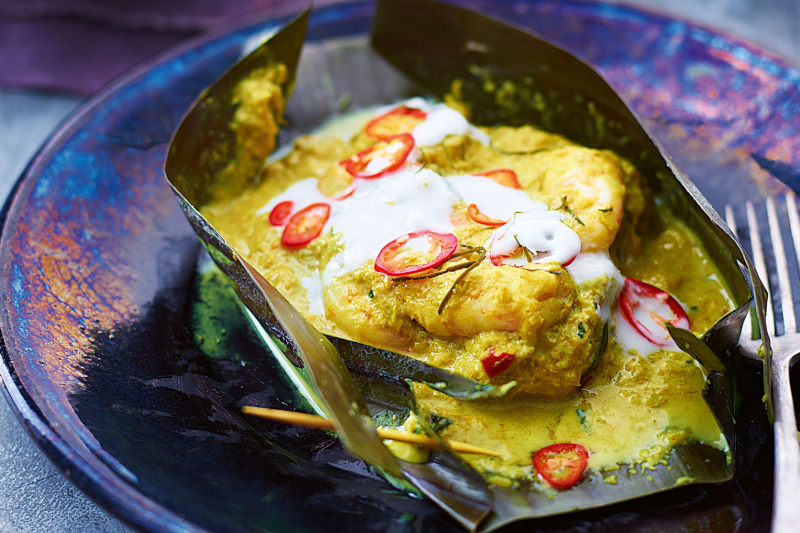
Source: Taste -
We always know very well that salads made with mango are quite common in Cambodia, as well as other countries across Southeast Asia. Some people comment that the Cambodian (also known as Khmer) mango salad is identical to Thai papaya salad - except that the former is often made using grated green mango, rather than unripe papaya like the Thai version.
Khmer mango salad is a beautiful blend of tart fruits, salted fish, and sweet brown sugar, without any fiery chile to burn your mouth. Cambodian food is, once again, the softer, calmer cousin of Thailand's spicy cuisine!
The Khmer mango salad also contains certain elements included in the payasam papaya salad recipe, such as the lime juice combined with smashed nuts, shrimp paste or smoked fish, minced garlic, onions, palm sugar, mint, and fish sauce. This is a very nutritious meal that can be prepared either vegetarian or vegan, by getting rid of the drying shrimp and oyster sauce.
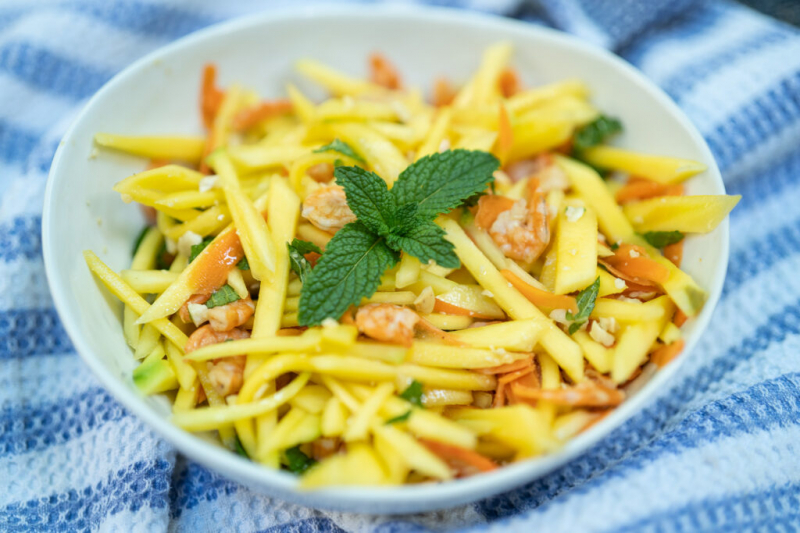
Source: Patterns of Humanity 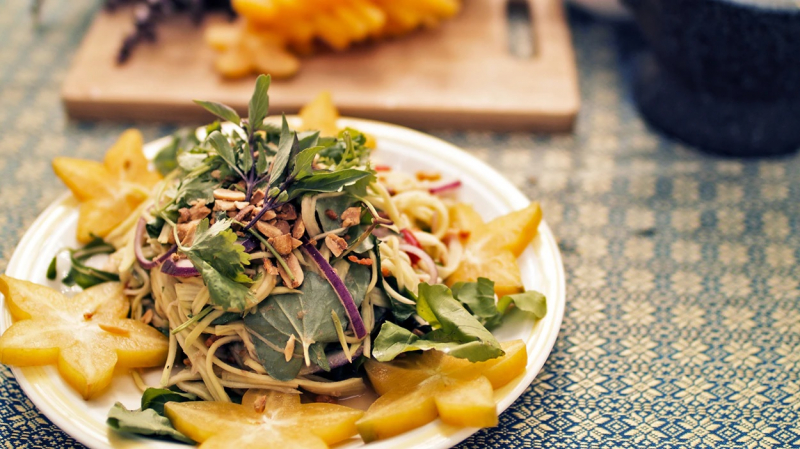
Source: SBS TV -
Beef lok lak is Cambodia's rendition of the Vietnamese dish Bò Lúc Lắc - which means "shaking beef." Identical to the Vietnamese dish, beef lok lak evolved due to the French dominance in the area: after all, during French colonialism, cows were mostly employed for farm works.
Our Cambodian beef lok lak dish calls for thinly sliced beef that is stir-fried with onions, cucumbers, and tomatoes. It is then accompanied by rice, lettuce, and, for added protein, a fried egg. To enjoy beef lok lak, stuff some important ingredients into a lettuce leaf, fold it up, and dip it in the delectable sauce.
The dipping sauce, prepared with lime juice, sea salt, and black Kampot pepper, is the centerpiece of the meal. Kampot peppers are also known as seashore peppers, due to their origins in Cambodia's coastal areas. It is widely regarded as one of the greatest chilies in the world! However, if you are unable to get any Kampot peppers, black pepper is a great alternative. It also enhances the taste of beef lok lak very well.
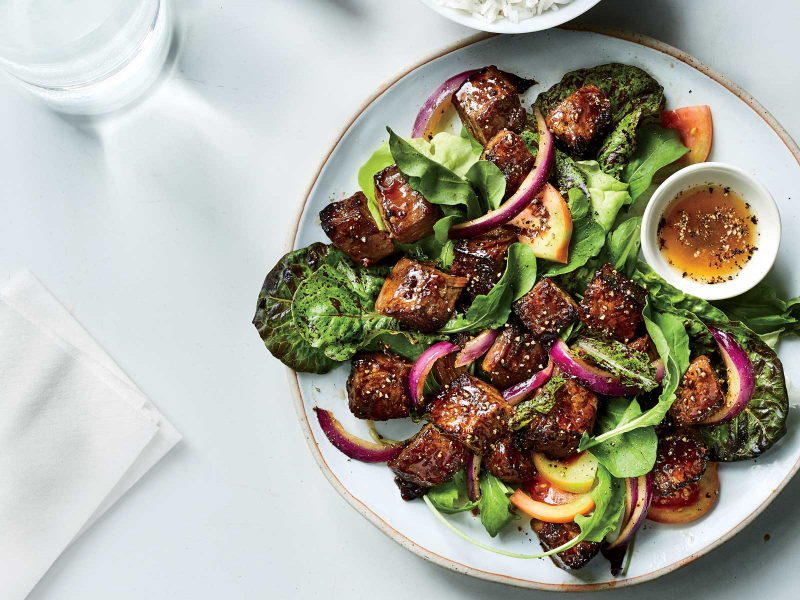
Source: Food & Wine Magazine 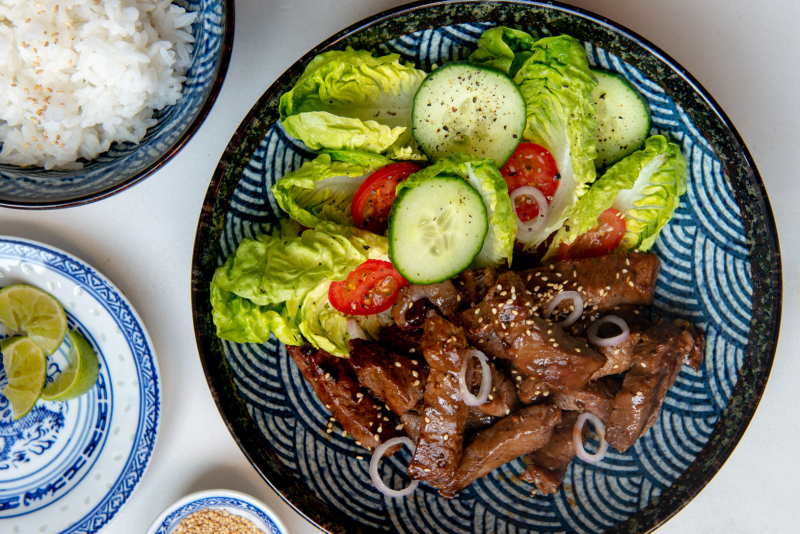
Source: Sous Chef -
Saraman Curry is similar to Masaman stew in Thailand, since it is a beef dish that originated from Cambodian Muslim regions who do not consume pork. It is well accepted in Cambodian areas, because the Cham tribe (a Muslim ethnic group in Cambodia) offer the greatest beef in the marketplaces, and this beef dish is one of the most delectable we have ever had!
However, Saraman Curry is one of the most difficult recipes to prepare, and because of its complexity, this meal is often reserved for special occasions. These difficulties are due in part to the lengthy list of spices, each of which need to be dry roasted separately, before being combined to form the curry paste. Some examples include coriander, salt, cinnamon, cardamom, cloves, star anise, red chillies, kaffir lime, turmeric, coriander, galangal, garlic, shallots, lemongrass, shrimp paste, and shredded coconut - what a long list! Following that, the curry should be cooked for at least two hours. In the meantime, you might want to add palm sugar, coconut milk, coconut cream, fish sauce, and tamarind water.
The final result, however, is definitely worth the tedious effort. It is the most exquisite beef you will likely ever taste.
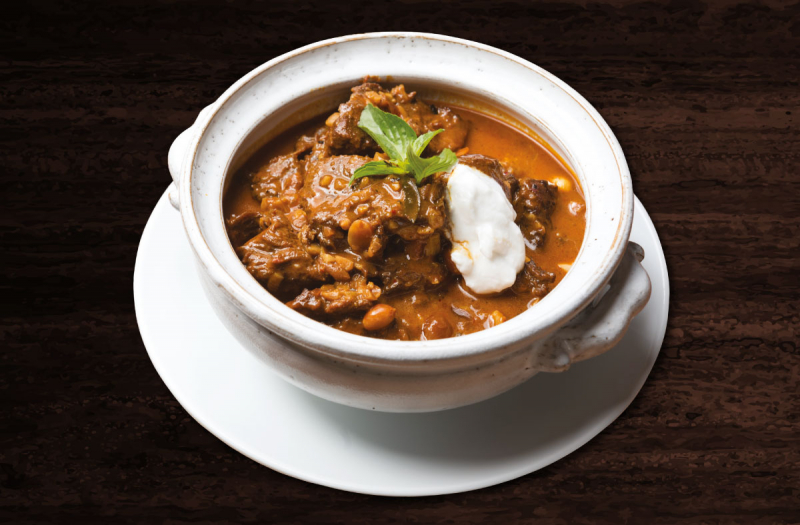
Source: Grill Wine Café 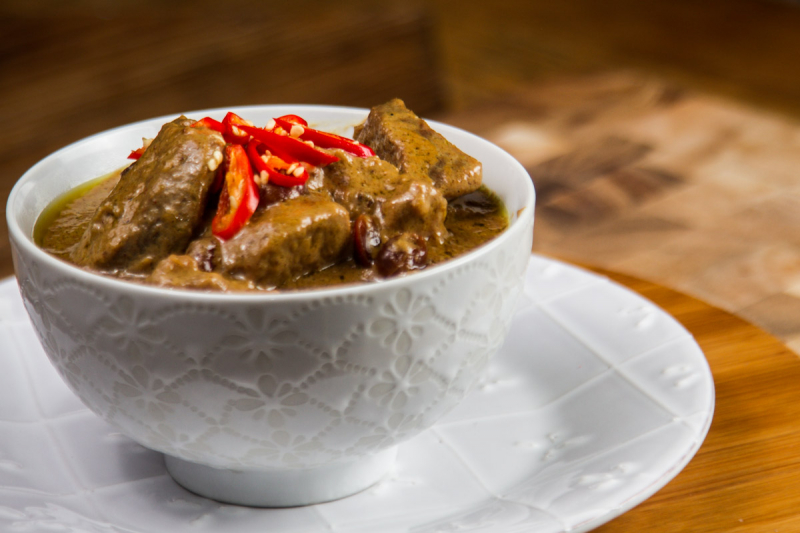
Source: Hungry Planet -
The term Num Banh Chok translates as rice noodle soup, and this is one of the most renowned Cambodian noodle soup meals available across the nation. It is primarily served for breakfast. In Cambodian towns, there is a common sight: women carrying the supplied ingredients on a heavy pole, balanced on their shoulders, to serve to clients in the morning.
To be more specific, Num Banh Chok (or Khmer noodles) is a dish cooked with lots of ingredients, including fresh white rice, fish-based chicken curry sauce, and garnishes such as pickles, mint leaves, basil, banana blossoms, long legumes, sweet peas, or wild foliage. White fish is used as the foundation for the curry sauce, along with jasmine, turmeric root, garlic, ginger, and kaffir lime.
According to legends, Thun Chey, a prominent Cambodian rebel and scholar, came to China after being expelled from the Khmer Empire. He had to trade Num Banh Chok in China to survive. Numerous Cambodians believe that Num Banh Chok inspired the Chinese people to invent noodles.
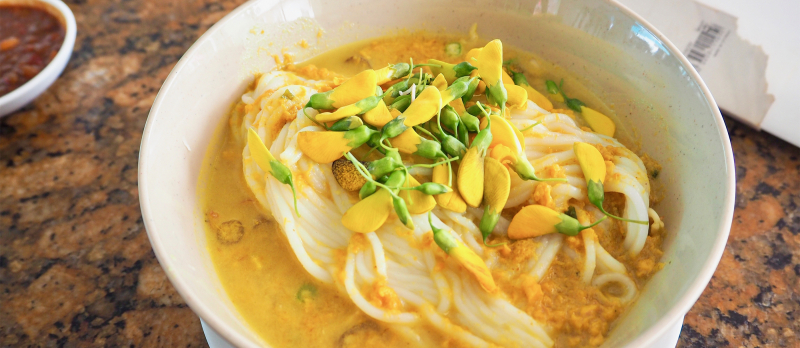
Source: TasteAtlas 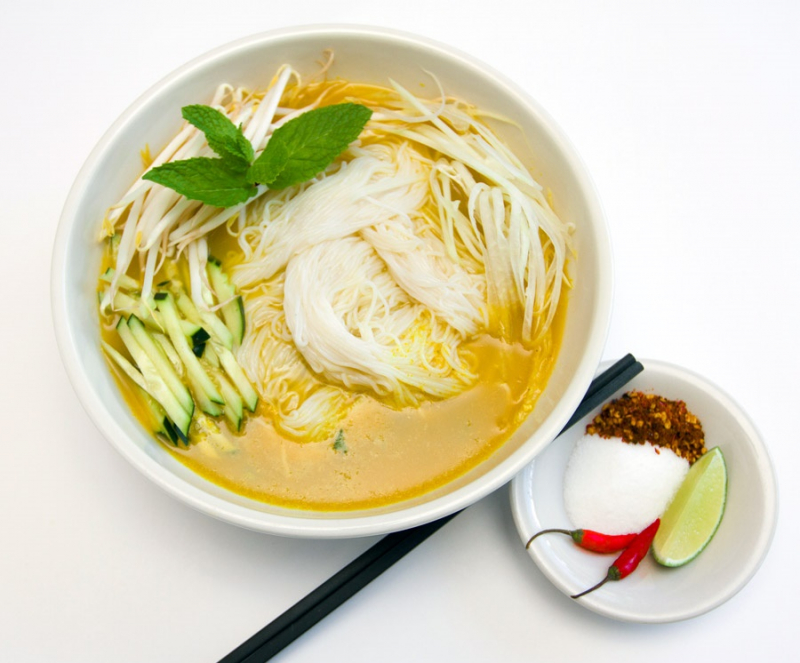
Source: DesiDakaar -
If you are not a fan of fish-based curries for breakfast, then you must be an enthusiast for another popular morning dish in Cambodia: Bai Sach Chrouk! This is a seemingly basic pork- and-rice recipe; however, do not let its simple appearance deceive you. This dish’s flavor is indeed out of the world.
Bai Sach Chrouk is a slow-grilled pork dish, often prepared with finely diced pork. The pork should be seasoned in brown sugar and fish sauce. It is served with a big portion of white rice, a fried egg, red cabbage, daikon radish, carrot, and ginger. In some rarer occasions, the dish can be served along with a bowl of chicken soup, garnished with fried onions.
It is such an incredible feeling to get up in the middle of Cambodia, inhaling the smokey deliciousness that billows over the sidewalks each morning. These signals mark the start of your wonderful breakfast! After a fulfilling and satisfying meal, you will be full of energy, ready for another day of exploration in Cambodia.
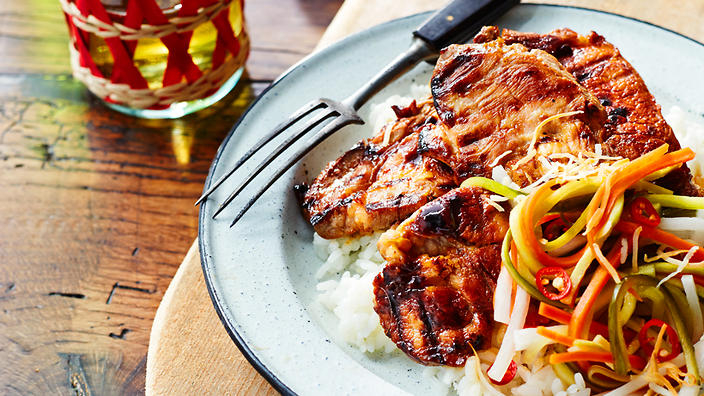
Source: SBS TV 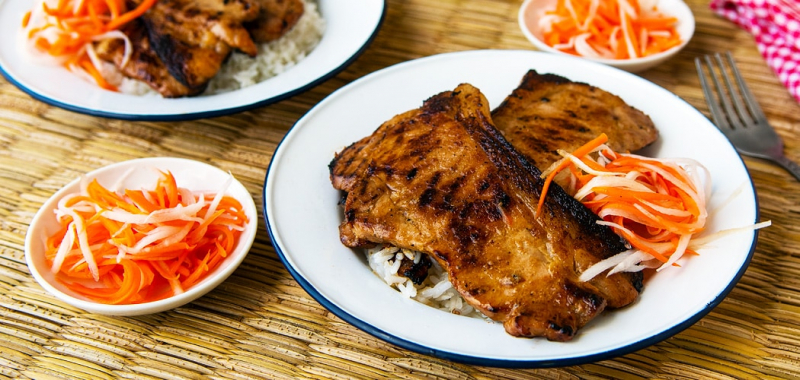
Source: Grantourismo Travels -
Nime chow (also written as naem chao) are Cambodian spring rolls. They are also referred to as Cambodian raw or fresh spring rolls. These incredible dishes are not only delicious, but also healthier than the more conventional crispy spring rolls. The reason is that they are not deep-fried. This is another significant evidence of Vietnamese impact on Cambodian cuisine, since nime chow is very comparable to Saigon's "Summer Rolls," which are somewhat close to Chinese egg rolls.
Although the origin of spring rolls is unknown (though it is widely believed to be China), each country's rendition varies to a certain extent. However, they are all delectable!
Cambodian spring rolls (Nime chow) are stuffed with a variety of washed steamed veggies, lettuce, fresh herbs, vermicelli, and ground beef. The outside filler is made of rice paper, while the spring turnovers are served with a condiment made of chili, crushed peanuts, and lime juice.
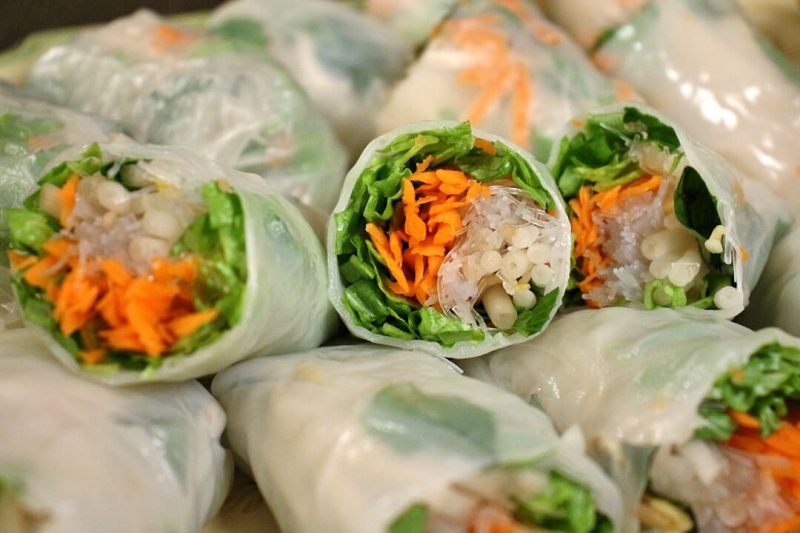
Source: Mission Food Adventure 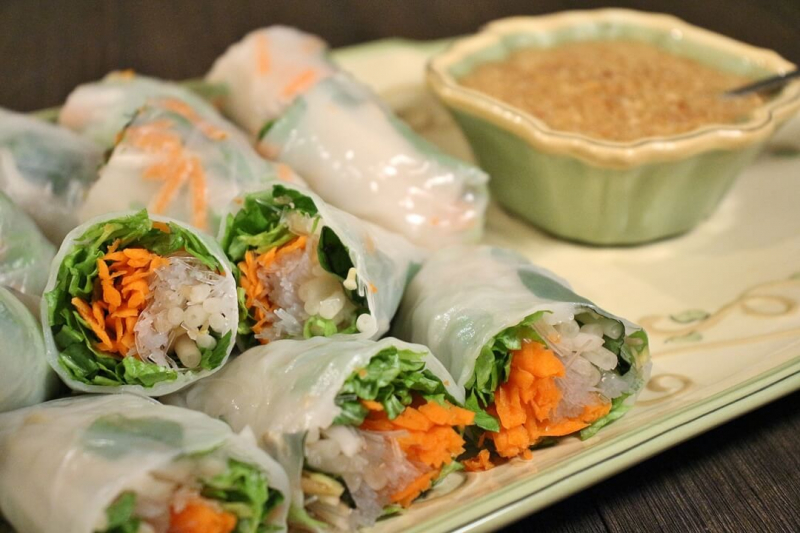
Source: Mission Food Adventure -
Cambodia - like the majority of Southeast Asian nations - has its unique variation of noodle soup. Rather than sticky rice flour, Cambodian Kuy Teav is prepared using sliced noodles that are produced from long-grain rice flour. As a result, the term Kuy Teav itself may refer to either the noodles alone, or to a dish that contains both noodles and extra ingredients.
Similar to other traditional foods, Kuy Teav is also another classic Cambodian breakfast item, sold at street food booths all around the nation. To make this delicious dish, you must submerge the noodles in hot water and then remove them. After that, place them in a dish with fish sauce, soy sauce, and caramelized garlic oil. Sugar and pig broth may be added to this as well.
Furthermore, a variety of toppings and garnishes are available, allowing the diner to customize the flavor to their liking. As a result, there are no two Kuy Teav dishes that taste the same. Some of their elements vary according to ingredient availability in different places.
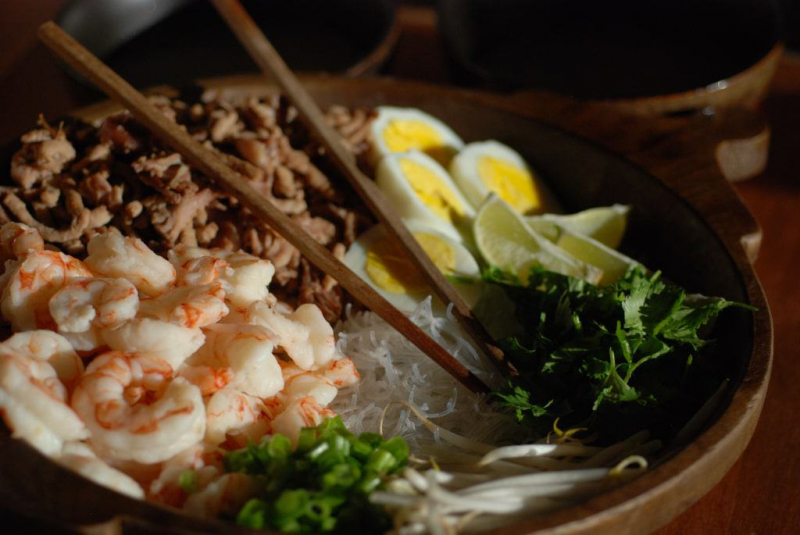
Source: Inrternational Cuisine 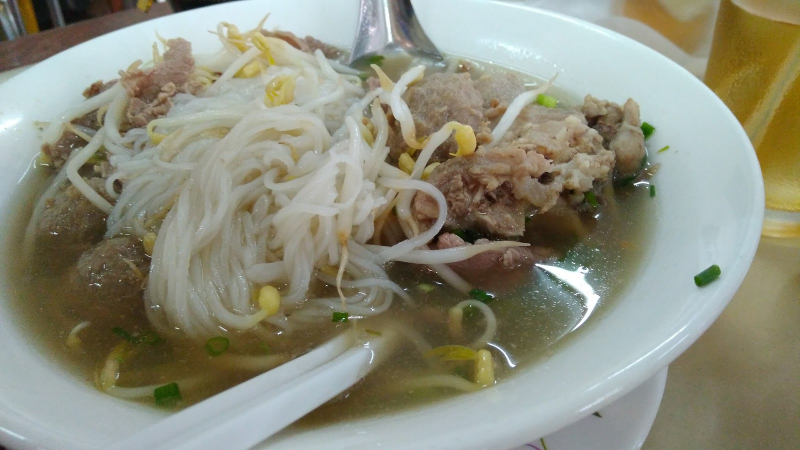
Source: Breath Cambodia -
The Cambodian Num Sang Khya L'peou (sometimes spelled as Sankhya Lapov) is an incredibly cool-looking dish made by steaming coconut custard inside a pumpkin. The custard is produced with just three ingredients: coconut milk, sugar, and eggs. However, since it is cooked within a hollowed-out pumpkin, small pieces of sweet pumpkin are imparted to the taste.
Num Sang Khya L’peou is offered as a dessert for important events and religious holidays in Cambodia. As we have mentioned, the dish is served inside little pumpkins. Most people often choose to have a customized pumpkin stuffed with the creamy custard. In some cases, bigger portions of the giant pumpkins could be carved out to feed other people as well.
This meal is always delicious, whether hot and cold. We are not sure about you, but the next time we get a large pumpkin, we would want to bake this delectable sweet treat instead of carving it like Cambodian locals. The creamy custard and the tender pumpkin flesh are a perfect match!
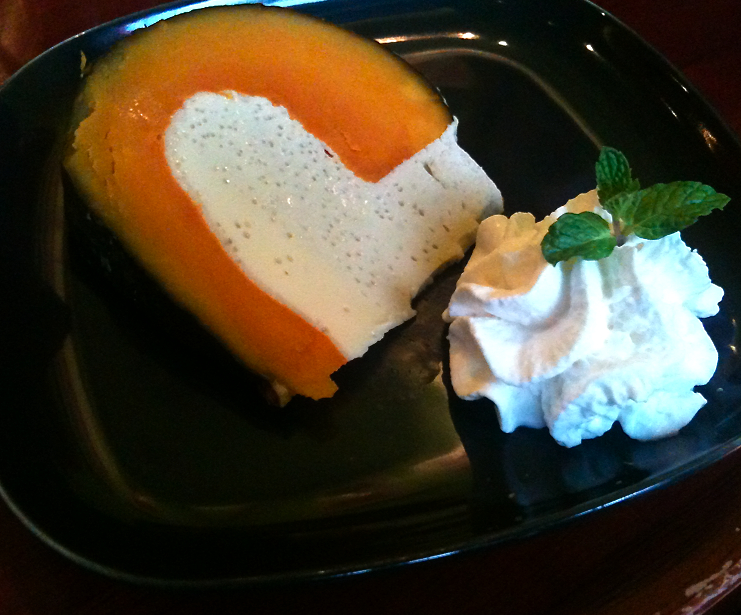
Source: https://jeju.wordpress.com/ 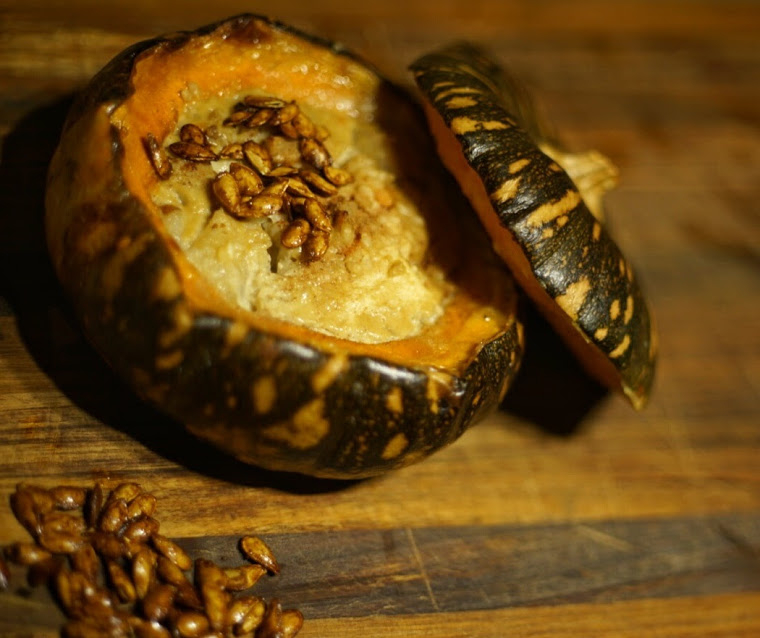
Source: Play With Food -
Lort Cha is a Cambodian stir-fry meal, composed of rice pin noodles, veggies, egg, and a variety of spices such as fish sauce, garlic, or green onion. Occasionally, chicken or other meats might be added; but all in all, the main reason for Lord Cha’s reputation is its simple and straightforward preparation with only veggies and noodles.
Yes, we can say that it is a quick-to-prepare dish, often sold at street food markets as a snack or lunch on the run. Along with its easy preparation, Lort Cha is also inexpensive and nutritious. It often contains a generous amount of fresh vegetables, such as Chinese broccoli, to balance out the crumbly texture of the noodles. Everything is simmered in a mixture of brown sugar, fish sauce, and black soy sauce, accompanied by a chili sauce.
Lort Cha is also often topped with a poached egg, which serves as the primary source of protein. We have to admit that we still prefer the basic version of veggies and noodles, without any other extra ingredients.
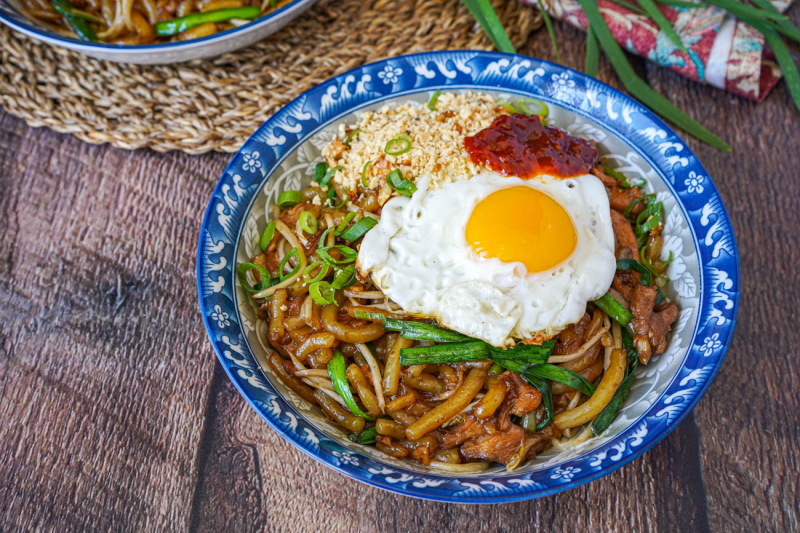
Source: Tara's Multicultural Table 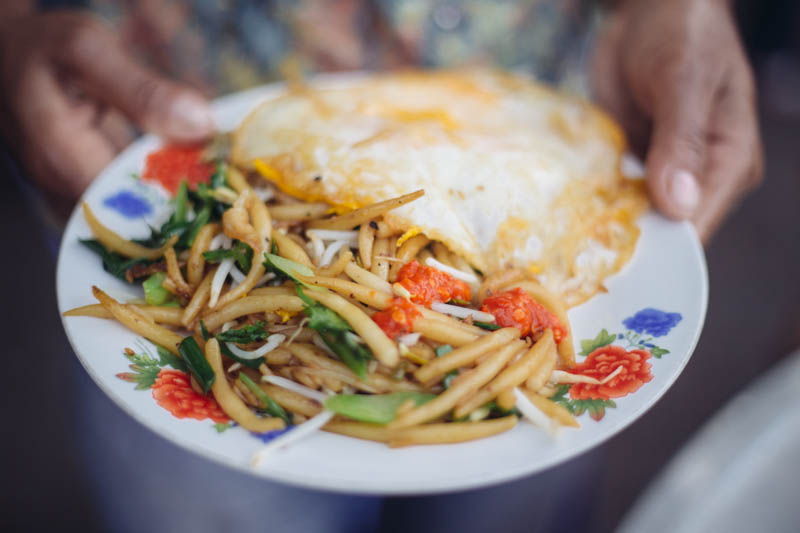
Source: Culinary Cuisine Cambodia












